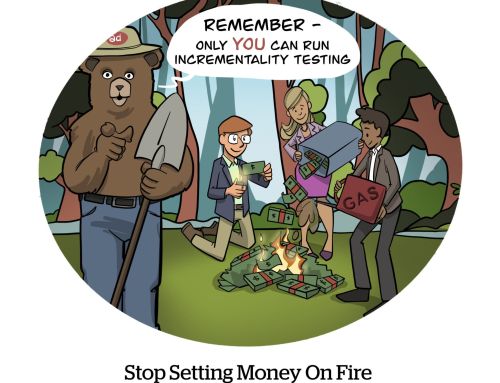In 2018, if you don’t have a website designed to attract customers to your business, you’ll be left in the dust by all of your competitors who do have one. Building a website sounds scary expensive, but it doesn’t have to be. With the right strategies, your company can quickly reach the top spots on a Google search engine results page.
It might also be time for a redesign. Website design has changed rapidly in the last three years with the move to mobile-friendly sites. So, if you haven’t updated your website in a decade, it probably looks outdated by today’s standards. Headlines blinking across the screen, elementary colors, big walls of text and lack of mobile integration won’t impress or instill confidence in the customers visiting your storefront.
Websites matter because they often serve as the first impression a customer will have of your business. A well-built website will help customers know you’re relevant in the industry.
Creating your website budget begins with deciding what type of website you need.
Step 1: Figure Out What Type Of Website You Need
Types of websites include simple business storefronts, portfolios, e-commerce and complex design.
Simple Storefront: A storefront is for window-shopping customers. It provides customers with information about your business, the team and usually contains a regularly updated blog full of valuable information about your industry.
Portfolio: If your business contains a lot of products or services, you might need a portfolio website to feature the type of work you do.
E-commerce: If you’re looking to sell products online, you’ll need an e-commerce website.
Complex Design: Some companies need complex designs complete with log-in features for customers, user dashboards, additional security and membership tiers.
A simple storefront will be the least expensive website design, followed by portfolio and e-commerce. Complex designs will be the most expensive.
Step 2: Purchase The Domain Name
Your domain is like your property address: It’s how people find you. Free domains are available on platforms like WordPress and Weebly, but they often look less official. For example, instead of yourcompany.com, it’s yourcompany.wordpress.com.
Consider your domain name carefully. If you choose one without considering how it will impact your brand, like choosing not to include your company name, you could confuse your potential customers. Some domains are easy to buy because they include a unique name that hasn’t been purchased by any other organization. If you try to purchase a common name like realtor.com or towing.com, it’s probably either already taken or will be an expensive name.
You could find an available or cheaper domain by adding your name or a unique company name or by choosing .net or .org instead of .com. A domain name will cost anywhere from 99 cents to several thousand dollars. Most will range from $12 to about $50, and they will require renewal every year.
Pro tip: Sometimes it is better to search for available domains on ICANN WHOIS rather than on websites where you’ll purchase it, like GoDaddy.
Step 3: Determine Your Hosting Fees
If a domain name is like a physical address, your hosting platform is like the property where you’ll build your business. You have to buy the address and the property. On average, expect to pay approximately $200 to $500 a year to host your website.
Hosting can range from $16 a month on sites like Squarespace, to several hundred a year on platforms like Bluehost, WordPress, GoDaddy or DreamHost. WordPress and Squarespace have a large community, so you’ll be able to find answers to most of your questions online. They’re also fairly easy to understand platforms for those who lack website management experience.
Step 4: Choose A Template
It’s more expensive and timely to create a website from scratch. Instead, most websites are built using a template. Luckily, there are plenty of free quality templates available, but sometimes you’ll have a better design and functionality if you purchase one. There are drastic differences in prices for website templates. Some cost $49 and others $1,000 (or more). If you are building a website with complex design rather than a simple storefront, you’ll likely spend more on a template.
Step 5: Pay For Regular Maintenance And Updates
Launching a website will cost a one-time fee with added renewal fees like hosting and domain names. However, keeping a website relevant requires paying for maintenance and updates. You’ll need to either invest your time, delegate to a team member, hire an employee or outsource the work of keeping a website relevant.
Some companies think that once the website is built the work is over, which is most often not the case. To have a high-performing website, you’ll need to keep an updated blog, make sure the services remain relevant and keep it fresh with new information and media.
Determine how much time you are willing to dedicate to this task every month and compare it to the cost of outsourcing or delegating the work.
Step 6: Write Down The Budget
First, determine how much you can realistically spend on design. If you need to spend less than $3,000, you’ll probably need to expect a simple storefront. A portfolio will typically cost somewhere between $3,000 and $6,000. An e-commerce website will fall somewhere in the $6,000 to $15,000 range, and complex custom designed websites cost $15,000 or more.
Next, find your domain if you don’t already have one, and determine your annual or monthly hosting fees. Decide if you’ll need to purchase a template or if a free template is effective enough. Finally, determine your monthly maintenance budget.
Your website will require an investment of both your time and money, but the modern consumer spends a majority of their time researching and buying online. In fact, the Pew Research Center reports that eight out of ten Americans are online shoppers. If you don’t have a well-built website, those customers will never find you.











